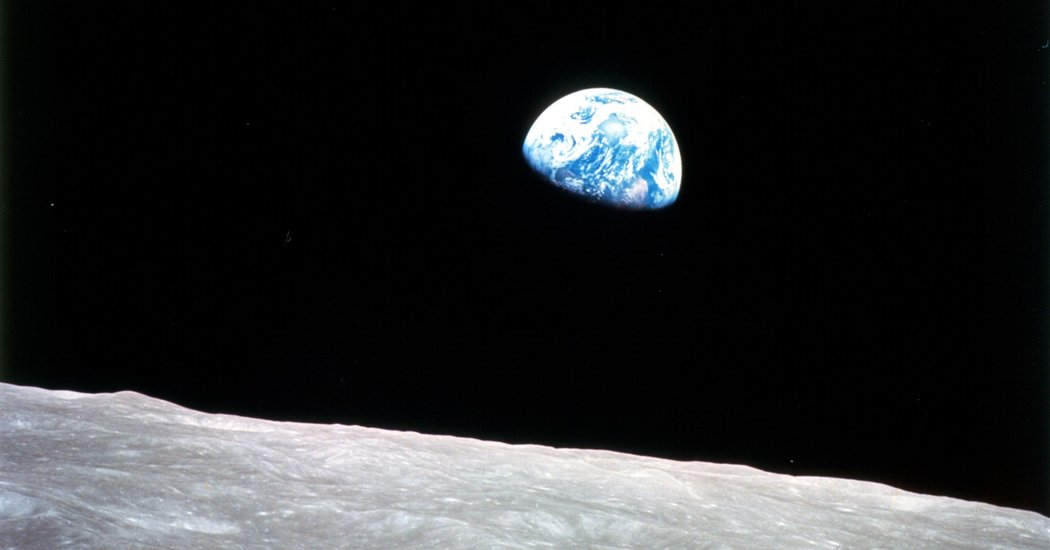During the 1968 Apollo 8 mission, his color photograph of an emerging Earth, known as “Earthrise,” became an icon and driving force for the environmental movement.
Maj. William A. Anders, who flew on the first manned space mission to orbit the moon, the Apollo 8 “Genesis Flight” of Christmas Eve 1968, and took the color photograph “Earthrise” credited with inspiring the modern environmental movement, died on Friday when a small plane he was piloting alone dove into the water near Roche Harbor, Wa., northwest of Seattle. He was 90.
His son Greg confirmed his death.
Major Anders, along with Col. Frank Borman, both of the Air Force, and Capt. James A. Lovell Jr. of the Navy, was part of the first group of spacemen to leave the bounds of Earth’s orbit. During their mission, they took photos and motion pictures of the lunar surface in preparation for the Apollo 11 fight, when men first stepped on the moon, and they were the first astronauts sent aloft by a giant Saturn V rocket.
Beyond those tremendous milestones, their mission was viewed as briefly reviving the spirits of an America stunned by rising casualties in the Vietnam War, the assassinations of the Rev. Dr. Martin Luther King Jr. and Robert F. Kennedy, and tumultuous antiwar protests and racial disturbances.
On Christmas Eve, during their 10 orbits of the moon, the three astronauts, whose movements were telecast to millions around the world, took photos of Earth as it rose over the lunar horizon, appearing as a blue marble amid the blackness of the heavens. But only Major Anders, who oversaw their spacecraft’s electronic and communications systems, shot color film.
His photo shook the world. Known as “Earthrise,” it was reproduced in a 1969 postage stamp bearing the words, “In the beginning God…” It was an inspiration for the first Earth Day, in 1970, and it appeared on the cover of Life magazine’s 2003 book “100 Photographs That Changed the World.” Just moments before Major Anders began snapping away, the astronauts could be heard, as captured by the onboard recorder, expressing their awe over what they saw:
Anders: Oh my God! Look at that picture over there. Here’s the Earth coming up. Wow, that’s pretty.
Borman: [chuckle] Hey, don’t take that, it’s not scheduled.
Anders: [laughter] “You got a color film, Jim? Hand me that roll of color quick, would you…
Lovell: “Oh man, that’s great.”
Decades later, in a 2015 interview with Forbes magazine, Major Anders said of Earthrise, “The view points out the beauty of Earth, and its fragility. It helped kick start the environmental movement.”
But he said he was surprised by how much the public’s memory of the figures behind that photo had faded. “It’s curious to me that the press and people on the ground have kind of forgotten our history-making voyage, and what’s symbolic of the flight now is the ‘Earthrise’ picture,” he said. “Here we came all the way to the moon to discover Earth.”
